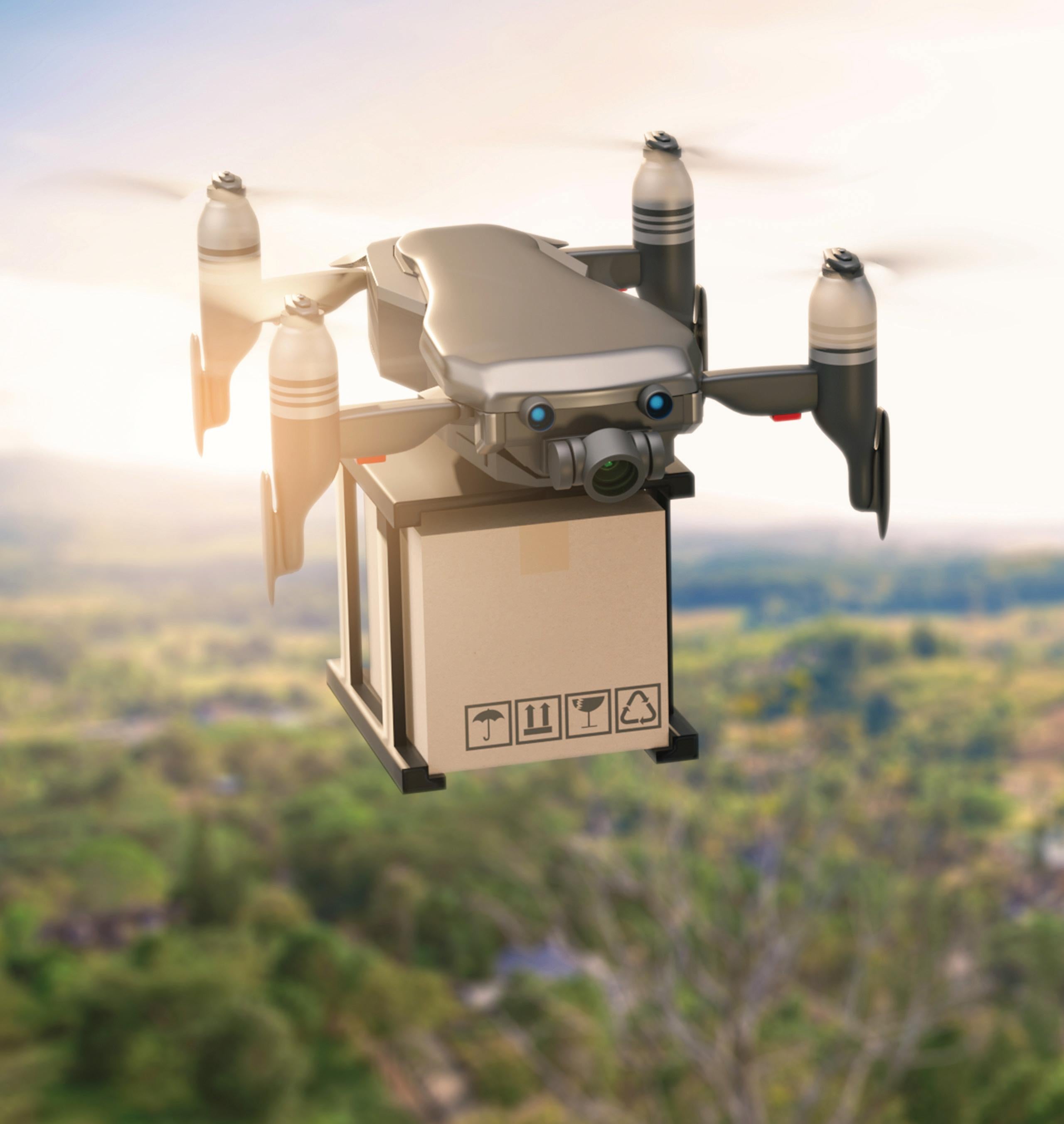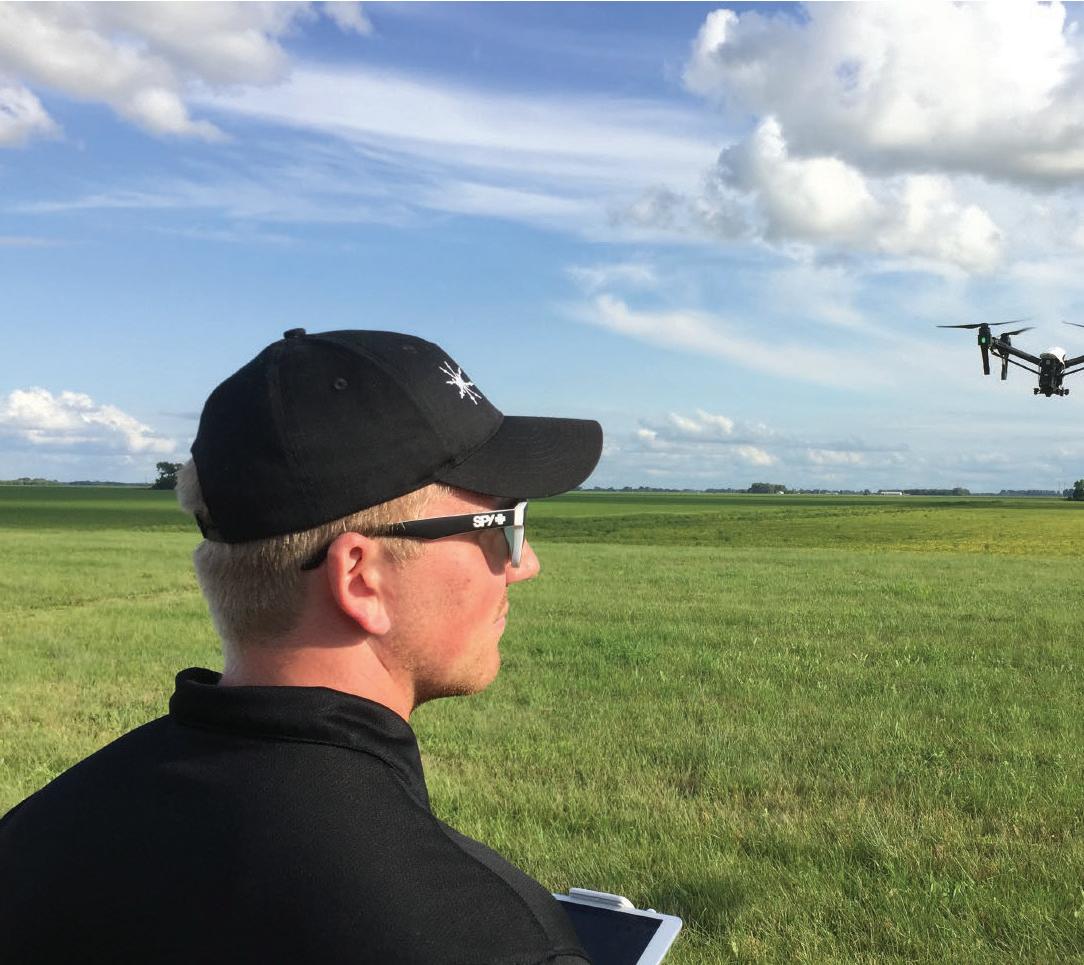
8 minute read
LEGISLATION
Core Components of CounterUAS Action Plan and Legislation
By Jeffrey Starr
The White House has issued a long awaited and sorely needed Counter-UAS National Ac-
tion Plan. Following the announcement of this plan, legislation was introduced in Congress with a bill called the Safeguarding the Homeland from the Threats Posed by Unmanned Aircraft Systems Act.
The Action Plan and the Bill acknowledge the well-established benefits from the proliferation of drones, but also express a significantly heightened level of concern about the concurrent associated risks from malicious actors weaponizing commercial unmanned aircraft systems (UASs). The strategic goal is to safeguard the expansion of positive UAS activity while also safeguarding airspace by closing notable gaps in current laws and policies with new ground rules.
While the Plan and Bill are quite detailed, comprehensive, and multifaceted, there are a few core elements which are at the centerpiece of both, and which warrant special attention.
In particular, the policy recognizes the importance of devolution and extension of authority to maximize capability for UAS detection; related to this, accuracy of characterization deserves no less priority, to minimize potential for UAS misidentification. Regarding the critically key area of mitigation, the Plan and legislation appropriately reflects federal caution regarding mitigation technology that could carrying the potential for hazards, such as operational disruption or collateral damage. With these safety considerations in mind, the Plans do start to encourage appropriate technology adoption for more advanced mitigation options designed to address such safety concerns and any movement toward such innovation should be encouraged and extended.
Extension of Detection: Devolution and Expansion of UAS Detection Authority to State, Local, Territorial, Tribal (SLTT) and Critical Infrastructure Levels
SLTT law enforcement agencies are tasked with ensuring safety in many environments, use cases, and scenarios in which drones represent a tangible threat, including heavily populated mega-events such as concerts, championship games, marathons, and political rallies, as well as at sites such as local government buildings and other facilities.
The easy accessibility and low cost of commercial drones make them readily available for malicious or careless actors to cause mayhem at events, damage to facilities, and harm to the local population. Drones can also be used to surveil law enforcement agencies, attack local authorities, and even target high-ranking law enforcement officials or other VIPs. Local first responders in dangerous situations could be targeted during a terror attack via drones. Malicious actors can use drones to prevent first responders from helping victims, or otherwise managing the situation.
In these situations, SLTT law enforcement may often be the only resource available to contend with and prepare for such incidents.
Granting UAS Detection Authority to these local level jurisdictions represents a major step forward in expanding the coverage and reach of security activity against rogue drones. The sheer numbers, locations, and resources of local law enforcement employing C-UAS detection technology would translate into a massive increase in the forces ready to contend with these threats and heighten the nation’s readiness and responsiveness in confronting the rapid increase in incidents and attacks.
Having said that, extending the authority for detection alone will not fully address the problem, unless some degree of corresponding mitigation authority is also extended, which points to the next major pillar of the plan.
Extension of Mitigation: Federal Pilot Program for Expansion of C-UAS Mitigation activity to SLTT Level
Extending detection capabilities alone will be of limited benefit without also extending complementary mitigation authority. The reasons for extending detection capabilities to SLTT also apply to mitigation. Ideally, the proposed mitigation pilot programs will have clear performance indicators and success factors such that if these goals are accomplished, the localized and extended mitigation authority will become permanent and expand in scope, commensurate with the risk.
Technology: List authorized detection equipment that avoids operational or communications disruption of airspace
Spotlighting C-UAS solutions and promoting counterdrone technology is essential, ideally in a manner that helps the nation advance and move beyond the shortcomings of legacy detection technologies, and encourages innovation with an emphasis on safety, control, and continuity. Encouraging trial and adoption of new smart technologies, beyond legacy jamming and kinetic based equipment, will help avoid the associated risks of disrupted communications and collateral damage. The stated need to avoid or minimize adverse impact on the communications spectrum and on the National Airspace System (NAS) is essential, and this exercise should also point to next-generation approaches which overcome these legacy limitations. Traditional UAS detection technologies have performed well in certain environments and have a role to play in a layered defense, but also have drawbacks in sensitive and urban environments.
Radar, for example, is known to often have a false positive problem, as it may falsely identify a bird or other flying objects as a drone. Optical solutions are ineffective without a clear line of sight, which is often the case in cities or hilly or mountainous terrain. Acoustic solutions are ineffective in noisy environments
or with increasingly quieter drones. The recommended technology guidance should highlight and emphasize detection technologies that deliver fast and accurate detections without false positives and with no line of sight or noise constraint limitations required.
Even more importantly, this exercise of authorizing and listing technology should cover mitigation technologies in addition to detection technologies, for obvious reasons. As with detection, legacy mitigation technologies also have major shortcomings and limitations in today’s sensitive and urban environments when confronting hostile drones.
Notably, one of the most common techniques, various forms of jamming, is only temporary, which means the hostile drone pilot can regain control after the jamming stops. In addition, and to the points raised on the Plan and in the Bill, jamming may disrupt communications and airspace operations.
The other alternative, multiple forms of kinetic solutions, all of which involve the physical shooting of some form of projectile, are highly risky in crowded situations and can cause severe collateral damage, either from the falling projectile or the downed drone.
An authorized C-UAS Mitigation technology program could foster new generation C-UAS technologies, including smart, cybercentric technologies that can disconnect, take over, and seize control of hostile drones, reprogram them to follow a safe route to a safe landing, and allow for total continuity, with no disruption to operations or communications, and which avoid the risk of collateral damage.
Critical Infrastructure: Enable and oversee placement of C-UAS Mitigation equipment at critical infrastructure sites
The emphasis on protecting critical infrastructure from hostile drones is encouraging and timely. The world has witnessed devastation from drone strikes on critical facilities such as oil facilities, power plants, and ports and harbors. The urgency around this step is obvious given the mission-critical role of these infrastructure sites combined with the fact that they often contain storage for hazardous and potentially explosive chemicals and substances.
Allowing the placement of C-UAS mitigation equipment for use by authorized federal security agency staff, or potentially newly authorized SLTT personnel, would be another step to greater protection and coverage of the homeland from hostile drones. This could be a first step towards eventually also allowing the site’s own security staff similar or defined allowances with proper qualification, training, and approvals.
In this environment and use case, it is imperative that the detection and mitigation equipment be based on the latest technology with an emphasis on safety, control, and continuity, avoiding any chance of operational disruption or collateral damage to critical infrastructure.
Incident Tracking: UAS Incident Database
Incident tracking databases can make a major contribution to better understanding the nature, changes, and trends that occur in the constantly changing drone threat. Such databases should track not only the obvious data like dates and locations, but also sectors, use cases, nature of the incident (attack, near collision, etc.) and if possible, the actual drone make and model. Conclusion – A Solid First Step Foundation for National C-UAS Protection
The Counter-UAS Action Plan and recently introduced legislation both include many relevant and timely steps and mechanisms to address the rapidly rising danger of rogue drones. These components are promising in their capability to bring the nation’s C-UAS readiness to the next level of heightened urgency with a more systematic and comprehensive defense.
The devolution and extension of drone detection and mitigation authority to more local levels; the support for new generation technologies that specifically address the problem in ways that emphasize safety, control, and continuity; the focus on the protection of critical infrastructure; and the tracking of incidents in a comprehensive manner all represent steps that should be adopted rapidly and applied in the broadest possible manner to maximize the value in reducing risk and achieving the widest homeland protection coverage possible. In all these steps, strong consideration should be given to extending mitigation possibilities to the same degree that detection responsibilities will expand, such that the full-incident lifecycle is covered for the safest possible outcomes.
The Counter-UAS Action Plan and the Safeguarding the Homeland from the Threats Posed by Unmanned Aircraft Systems Act both bring many urgently needed countermeasures to address the rapidly rising danger of hostile drones. These steps promise to bring the nation’s C-UAS readiness to the next level of heightened urgency, and provide a more robust, systematic and comprehensive defense. Strengthening and expanding these authorities and plans, for both detection and mitigation, will enable the new drone society and economy to flourish, while safeguarding the homeland from the rapidly rising risks of rogue drones.
Author: Jeffrey Starr Chief Marketing Officer, D-Fend Solutions JeffreyS@D-FendSolutions.com







